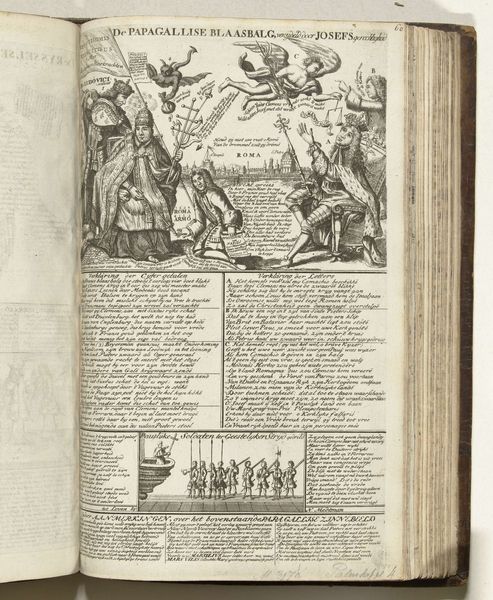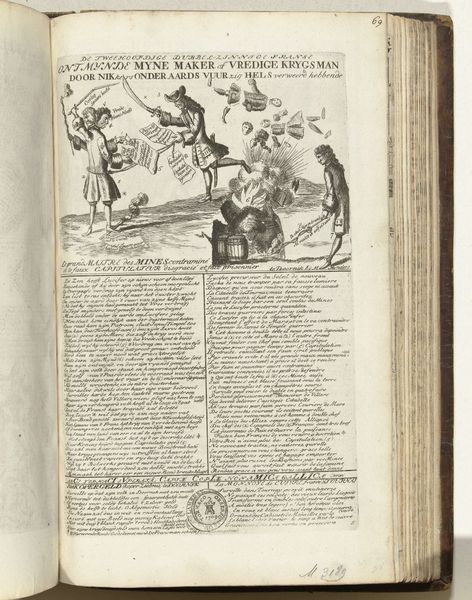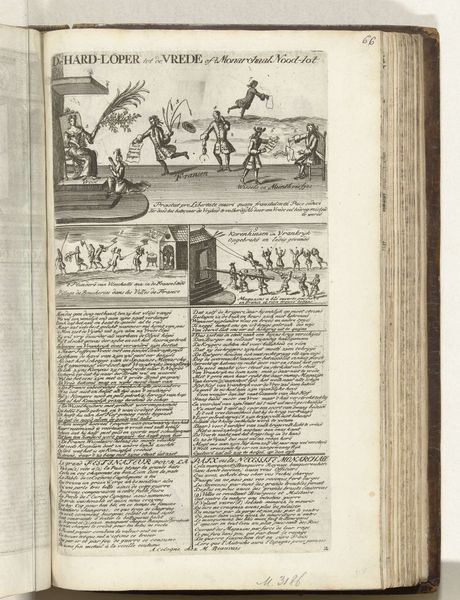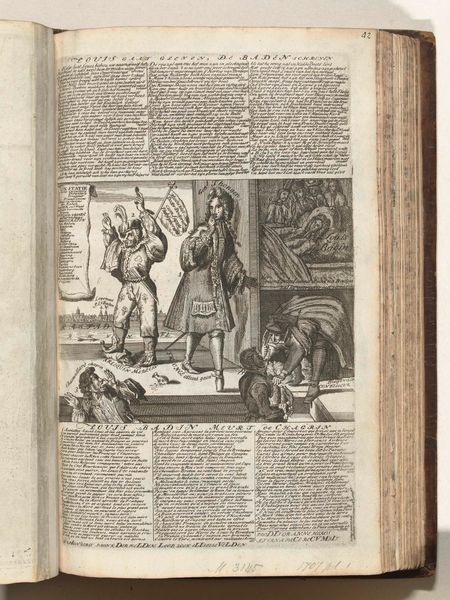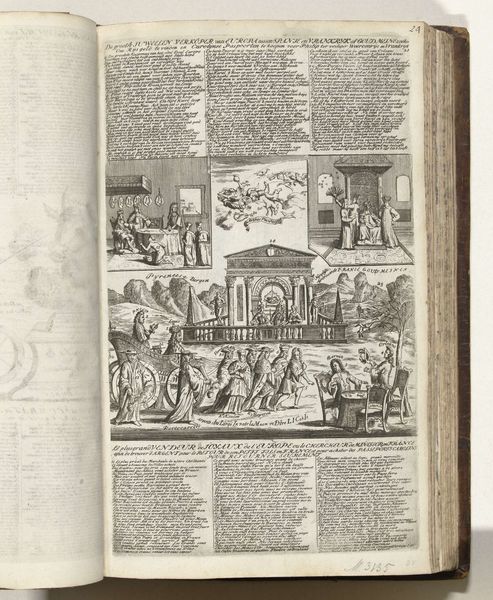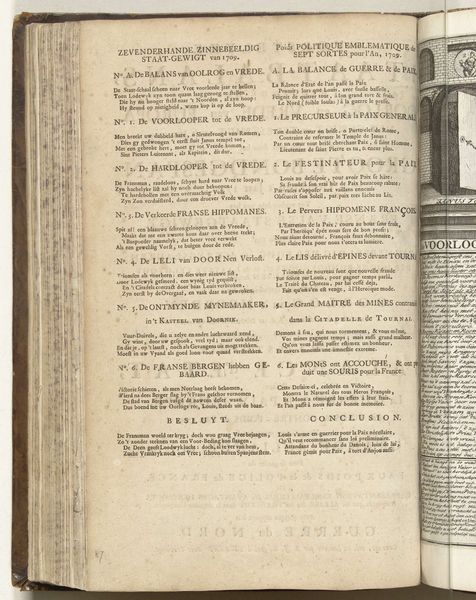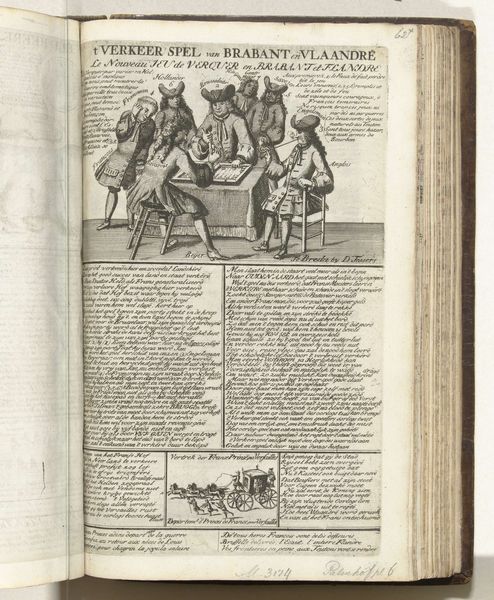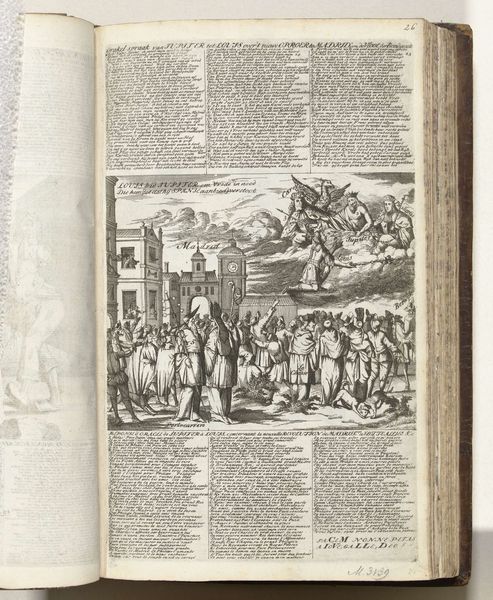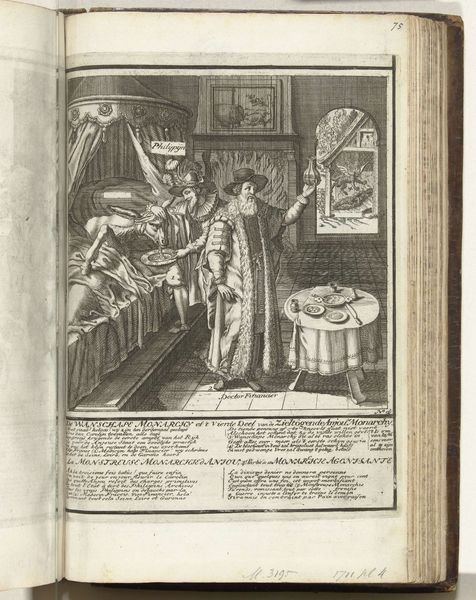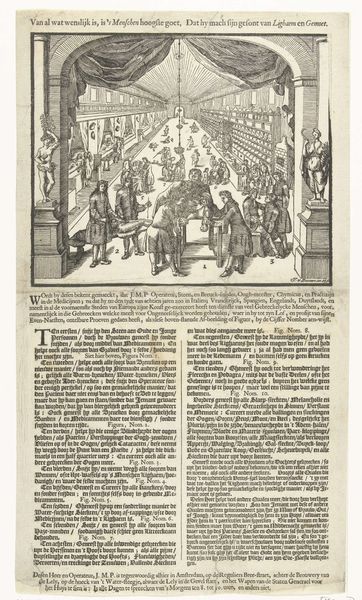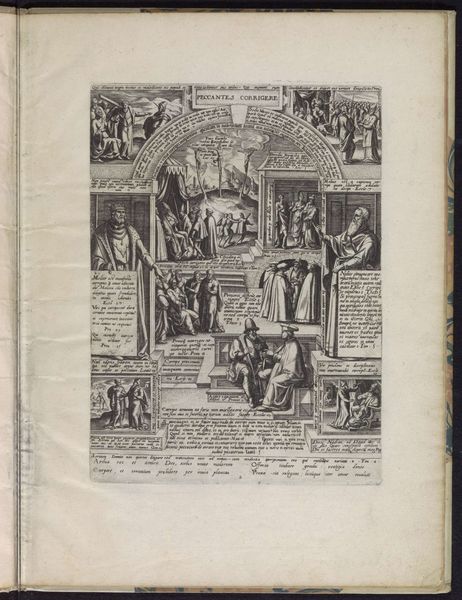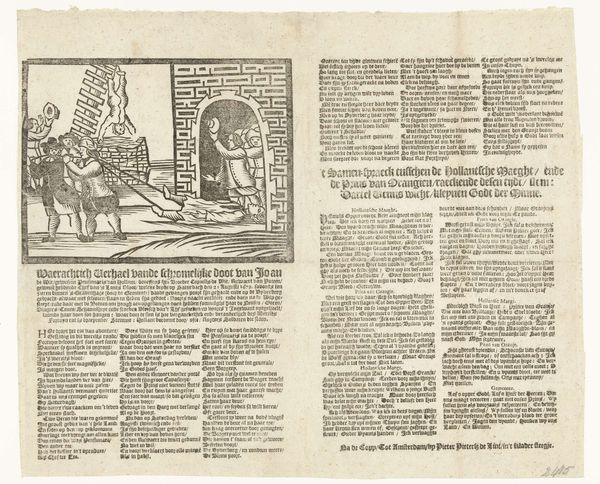
print, engraving
#
narrative-art
#
baroque
# print
#
history-painting
#
engraving
Dimensions: height 315 mm, width 200 mm
Copyright: Rijks Museum: Open Domain
Editor: This engraving, titled "De Janustempel wordt door de paus gesloten, 1709," but created in 1710 by Abraham Allard, is quite fascinating! The mood seems rather formal and staged, a symbolic representation rather than a real-life scene. The lines are so precise, and I am wondering what a modern viewer should know about this to understand its deeper message? What do you see when you look at this? Curator: As a historian, I immediately consider the socio-political context. This piece engages with the political landscape of 18th-century Europe. The "Temple of Janus," traditionally open during wartime and closed in times of peace, is shown being closed by the Pope. This isn't merely a depiction; it's a political statement about the papacy's role in fostering peace, or at least the *representation* of that role. Notice the procession of figures symbolizing peace, perhaps hinting at various political powers involved. Who benefits from this visual narrative? Editor: So, it is less about the literal action of closing the temple, and more about promoting a certain image of the Pope as a peacemaker? It feels propagandistic in some way. Is the baroque style common for such messaging? Curator: Precisely! The baroque, even in print form, was often used to convey power and authority. The highly detailed engraving, the symbolic figures, the theatrical composition – all contribute to a sense of grandeur and legitimacy. Consider also the intended audience. As this is part of a printed book, this image would have been widely accessible. Who was Allard trying to reach with this message, and why might that be significant? Editor: It seems it might target readers already aligned with papal authority, or those the papacy *wanted* to reach. Thank you, now the image makes more sense. I had seen narrative and baroque, but I never saw "political marketing" until now.
Comments
No comments
Be the first to comment and join the conversation on the ultimate creative platform.
